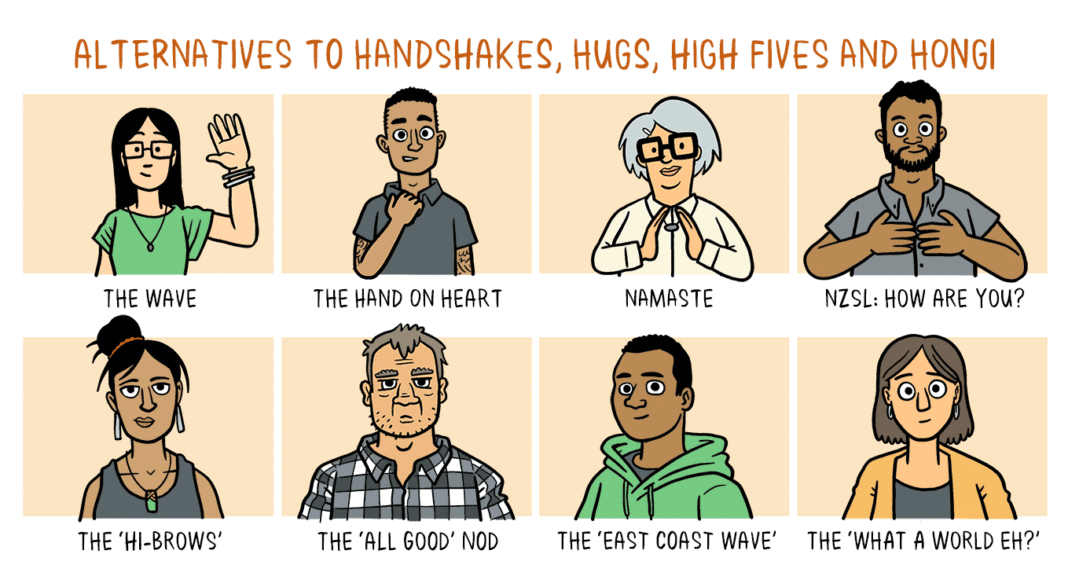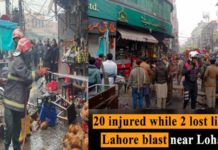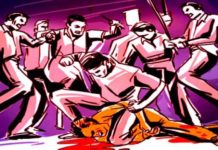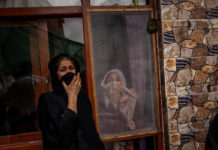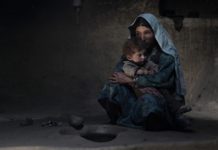Disclaimer: You are going to read “Social Distancing (SD) protocols” a lot here.
Hey, guys. After a long hiatus, here’s one topic that has driven (and triggered?) me enough to write about it.
I am Dr. Parivash and this is first in the series of COVID-19: THE CONCEPTS OF SOCIAL DISTANCING AND WHY IT’S IMPORTANT.
Lots of people by now, myths or no myths, know about COVID-19, it’s transmission and it’s symptoms. They get to hear lots of new phrases including "social distancing" , "quarantine" and "flattening the curve".
Let’s get one very simple thing straight here and let’s not freak out while we do that. COVID-19 does NOT have any definitive treatment OR vaccine OR medication. YET! (Sadly!) But, good news! All we DO have in our hands is PREVENTION!
Prevention, in it’s true means, refers to modifying yourself and your lifestyle in a way such that you avoid the disease from happening. It is usually advised in people who are at a risk of a particular disease. In this case, however, literally nobody’s safe. All of us are either at a risk of COVID-19 or are carriers of COVID-19. This is what makes this virus unique, problematic and…scary.
But, staying true to my oath, I am going to do whatever it takes to serve humanity till I die. For me, one way of serving humanity is to educate humanity.
As you all know, the first thing Pakistan did was to shut down all the educational institutions, switching to online classes and cancel the major cricket event, PSL-2020. While it is ultra disappointing and sad, it is done to avoid drawing big crowds to a place. This is an example of social distancing.
Social distancing involves deliberately increasing the physical space between two people in order to avoid spreading illness. This means avoiding hangouts, public places, reunions and even, work.
But, how much distance should there be?
According to WHO, a minimum of 1 metres (3 feet) distance is supposed to be exercised between two people. The best way to do that is to imagine you holding up a broom, the correct distance would be if you can’t touch anyone with that broom! (Please don’t carry a dirty broom everywhere.)
The major problem with this virus is that it spreads through airborne droplets, which means anyone with infection who coughs, sneezes or even breathes in your bubble of air (3 feet around you) is likely to get you infected. Because, that way you are more likely to breathe them in.
Another way this virus can be passed on is through direct skin-to-skin contact. This means, no handshakes, no hugs, no caressing, no hi-fives, no fist-bumps, no tickling and definitely NO KISSING! No matter how much you want to, it can wait.
Instead of hand-shakes and hugs, greet people with a nod or a bow or a victory sign. Cuz only that way, it’s all good, mate!
If it spreads through skin contact, it means we have to practise a certain for of self-isolation.
For me, it means, you do not touch your face (especially your nose and mouth) with your hands. If you have caught the virus on your hands from somewhere, it is likely to get into your lungs that way. And, that’s ugly.
And, try to keep your hands clean at all times. Wash your hands literally every 20 minutes. Or just use a hand sanitizer every 20 minutes. Basically, keep your hands sanitized as much as you can. This is proven to be more effective than wearing rubber/latex gloves to public places.
If you cough or sneeze, do it in your clothed, bent elbow or in a tissue paper. NOT in your hands. DEFINITELY NOT in the air. Discard the tissue paper immediately. This is something you can do to protect those around you from COVID-19 as well as other common airborne diseases like flu.
Other than that, stay at home if you have mild symptoms like coughing, runny nose or headache. Drink plenty of water and wear a face mask at all times. Continue the protocol of self-quarantine for 14 days.
Take anti-histamines like Softin (Loratadine), Piriton (Chlorpheniramine maleate) and Kestine (Ebastine) for 14 days while staying at home in case of mild symptoms.
For extreme cough, use a humidifier for peaceful sleep for you and your family!
FOR FEVER, DO NOT TAKE IBUPROFEN OR NSAIDs! This means no Arinac! Switch to the body-friendly Panadol (Paracetamol) in case of fever. 2 tablets thrice a day. Until the fever gets better.
Needless to say, DO NOT TAKE ANTIBIOTICS FOR ANYTHING WITHOUT A DOCTOR’S APPROVAL. If you’re taking antibiotics to protect yourself from COVID-19 or if you think you might have COVID-19, then I’m sorry to break it to you: you’re wasting your money, time, efforts and pseudo-knowledge. Because, antibiotics are for BACTERIAL infections, and COVID-19 is a VIRUS. Basic revision! Don’t get yourself into a new ordeal (antibiotic resistance) , while trying to get rid of one (COVID-19).
In case of severity of symptoms like difficulty breathing, contact a medical professional at your earliest convenience. I’m not saying you would definitely have COVID-19 in this case, I’m just saying your doctor will guide you better than yourself or those around you. Seasonal allergies are underway at the same time and it’s better to rule it out before anything.
CORONA HELPLINE: 1166
Okay, I’m gonna address this one major question now.
How important are surgical masks in protecting us from COVID-19?
The answer, unfortunately, is: Not much. Surgical masks are NOT designed to block out viral particles from entering into your airway. The only purpose they serve during this outbreak is that if you’re sick, your aerosols will be blocked out from the world. You won’t be able to transfer it to those around you.
If you genuinely want to protect yourself from the virus, wear N95 respirators! These require special training in order to fit the mask on your face the right way.
In my view, if you’re practising social distancing in its true means and staying in quarantine, then you don’t need to adopt this extra hassle and wear these respirators.
Right now, we all have to believe that WE are infectious, so if you do step out of the house (it’s preferred that you don’t) wear the surgical masks while adhering to the social distancing protocols. Proven effective. Case in point: China.
Also, discard the mask when it gets wet or dirty or when you’ve used it for two days straight.
Now, coming to a genuine concern.
What is the purpose of all this except getting all unproductive, lethargic and…lonely?
That is very fair and justified concern and we are all in this together.
The infection, the virus itself is NOT deadly. It just spreads very fast and is very difficult to control. This makes it a challenge to manage it. The new cases every single day overloads the medical staff and facilities, making it extremely hectic, if not scary due to lack of armamentarium.
There is this thing called an epidemic curve. That’s a long story on it’s own but we are going to summarise it here. It has three phases itself, but what’s important is:
Containment: This is phase 1, when the virus is out there but is under control, because people are aware of preventive strategies. This phase is the aim until the vaccine is available for COVID-19.
Flattening the curve basically refers to decreasing the number of reported cases by sticking to SD protocols. A steep rise in epidemic curve means dozens of cases coming forward daily. We, as the general public, possess the power to keep the curve even and flat. This means, keeping the new cases WITHIN the capacity of healthcare professionals.
Here’s a beautiful and precise illustration I got off the internet to explain this. No copyright infringement, link attached.
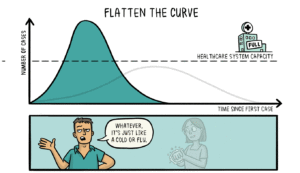
I’m going to conclude this with a Hadith by our Prophet Muhammad (pbuh).
Sa’d reported: The Prophet, peace and blessings be upon him, said, “If you hear of a plague in a land, then do not go into it. If it happens in land where you are, then do not go out of it.”
(Source: Ṣaḥīḥ al-Bukhārī 5396, Ṣaḥīḥ Muslim 2218.)
May Allah bless us with adequate knowledge and efforts to avoid this outbreak of COVID-19 AND not spread it either, while affirming our belief and trust in Allah.
Till next time. While you don’t panic but be careful.
Signing off.
Many love, prayers and hopes for y’all.


